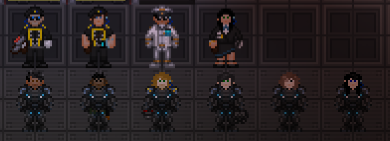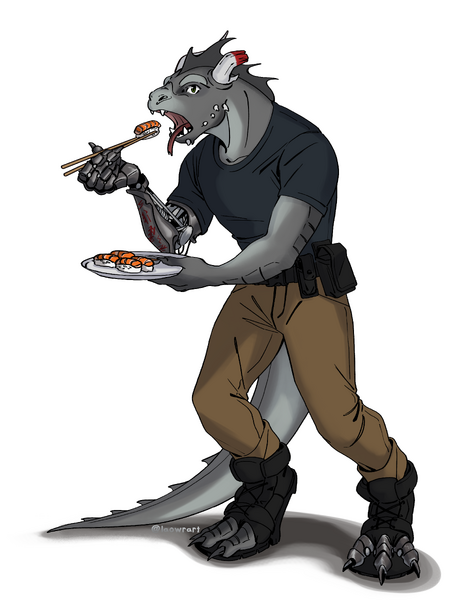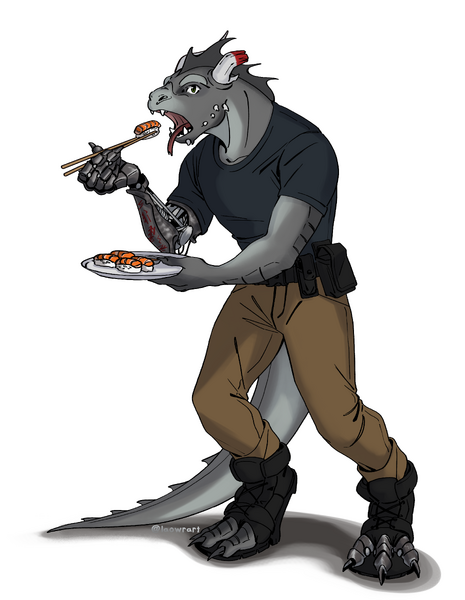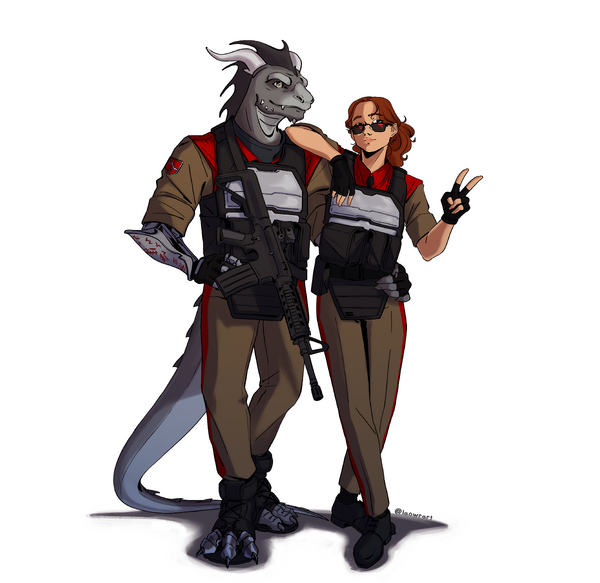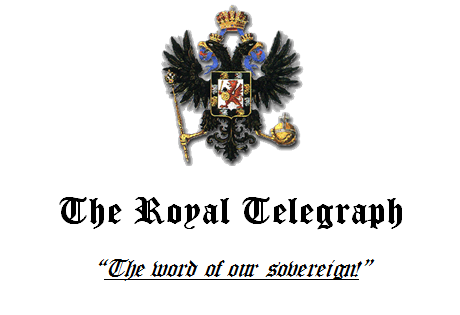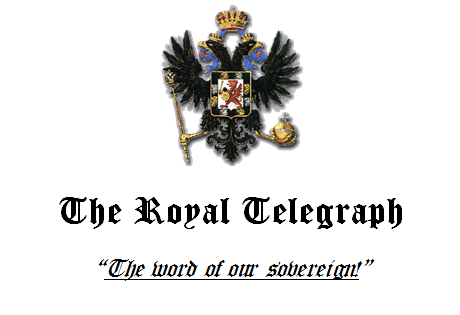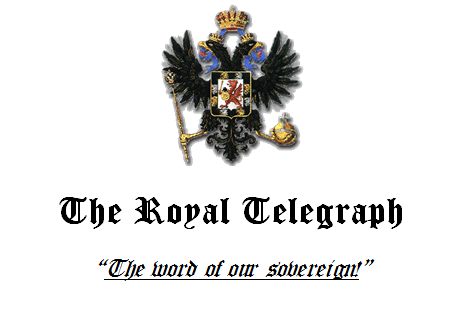-
Posts
417 -
Joined
-
Last visited
About CatsinHD
- Birthday 19/12/2003
Personal Information
-
Occupation
University Student
Linked Accounts
-
Byond CKey
catsinhd
Recent Profile Visitors
The recent visitors block is disabled and is not being shown to other users.
CatsinHD's Achievements

Research Director (27/37)
-
The collection of character art, or other adjacent items, of Alarzoeh Has (Security Officer - Zavod).
-
Arctic Expedition Discovers Anomalous Cave System 29.11.2467 The joint arctic expedition into the north pole by the Ministry of Technology and Navy has made a new discovery this week. During a standard expedition into unknown regions of the pole, a cave system was discovered within the glacial ice. What made this discovery unusual were the magnetic readings around the mouth of the cave. The expedition crew reported the complete dysfunction of their compasses, alongside altered reports from electrically powered sensor equipment. Scientists from Rhagrrhuzau Station were unable to provide a sufficient explanation based on the data gathered, reporting only that the cave has an unusually high magnetic field. While they continue to work on analyzing the unusual nature of the cave system, a temporary camp is being prepared near the mouth of the cave. The expedition across the North Pole has been a boon to Hadiist science ever since it first began. Adhomai’s northern pole, while unassuming, is a hotbed of new science and data. Unlike the Al’mariist-sponsored pirates, and lost Royalists, the Republic’s expedition crews have been focused on the research of this important region. Already, the geological understanding of our planet and system have been enhanced by the meteorite at Camp Afterfall and the ice cores collected from vast northern glaciers. The possibilities of harnessing the Plasmageist, an anomaly not unlike the Tesla generators powering the prosthetics of veterans and civilians alike, are endless. With a new opportunity for research presented, the brave scientists and Ha’narri Scouts strike at the chance to further Tajara into the future. With the recent discovery, Minister of Technology Zhuldyz Hadii allocated further resources to the exploration of the cave system now dubbed the “Mukorshik’s Den”, named after the higher number of Mukorshiks present around and within the entrance of the cave system. Further requests were sent to the Tampiska Polytechnic University for technical assistance in overcoming the unusual magnetic fields of the cave, as further exploration is hampered by the effects the cave has on the expedition’s equipment. University administration promised advancements in shielding for expedition equipment as soon as possible.
-

accepted Mat4k9 Taj App (khajiit maxxing)
CatsinHD replied to Mat4k9's topic in Whitelist Applications Archives
Accepted -

accepted Mat4k9 Taj App (khajiit maxxing)
CatsinHD replied to Mat4k9's topic in Whitelist Applications Archives
Thank you for applying! You have a solid character and background, but there are a few questions: During the Second Revolution, how was Mirir's family affected by the practices of the ALA (confiscation of crops, for instance), and their proximity to the frontline? During Mirir's time in Crevus, what were her interactions with the gangs and families of Crevus like? What is Mirir's views on the Twin Suns Worship? -
Thank you for applying! The FTC strikes once again for a Tajara Deputy application. I do have a few questions. Answer the best you can, remember that there are no wrong answers. 1. Your stances on the future of Tajara lore are based around developing existing lore and integrating into the rest of NBT2. Tajara lore does have a degree of control over the direction, themes, and endpoint of the lore. What thoughts, ideas, or comments do you have on where Tajara lore would be at NBT2 (I.E. factions, themes, communities, culture, etc.)? You don't need to address every example; broad ideas are fine. 2. War is a strong choice in conflict, and a powerful tool for engagement when done right. However, it is an option best used in moderation. What is your stance and opinions on other methods of conflict that may be used in other areas of the lore, sometimes at the same time as a (proxy) war. Examples may be espionage, border conflicts, the North Pole race, etc. 3. As was discussed before, the Lore Deputy position (within the Tajara team at least) can have many different duties. Ideation, proof-reading, arc running, article writing, etc. Are you willing to handle these duties, and which ones are your preferred duties to handle?
-
Harlala Promises Aid for Little Adhomai 15.11.2467 In the fight for Adhomai’s freedom from the Hadiist tyrants, Royalist oppressors, and chains of the alien corporations, the Republic has always promised support of those off-world communities in need. The struggle of Tajara everywhere is a shared cause, and while the nation may be close to home, those in Mendell City remain stuck under the willful ignorance of the human government. District Six of Mendell City, better known as Little Adhomai, has degraded as Hadiist corruption and neglect from the local government allow the once vibrant community to fall into ruin. President Almrah Harlala is not blind to the needs of this off-world community, one which houses many Al’mariists alike who had sought out a better life. A recent commission examining the material needs of this community outlined a number of areas that the nation would be able to assist with: Food, electronics, and security were chief among the list. With a clear vision of what is needed, supplies were gathered in Shastar City for transport to Mendell City. Due to the limitations of freight costs, only one vessel was able to be contracted, and as a result generated arguments among those assembling the manifest. Notably, Supreme Commander Halkiikijr Nated'Hakhan incorporated a supply of undeclared items. Many civilian staffers speculated that the unmarked boxes were weapons, however none of these rumours were confirmed by the Liberation Army or Supreme Commander Nated. With these concerns, requests were made to exclude the unknown supplies, as their presence necessitated the removal of food and clothing. Halkiikijr Nated'Hakhan remained firm in his decision to keep the supplies a part of the manifest, stating that the removal of these items would result in the Liberation Army escort being recalled. The diplomatic delegation within the Republic of Biesel has confirmed their plans to receive and distribute the supplies in Mendell City’s District 6. Commander Kyff Hotak pledged a handful of soldiers to participate in the protection of the supplies and the Al’mariist delegation during distribution efforts in the city district. Concerns of violence from hostile elements remain high even despite the humanitarian nature of the operation. Voices across the National Assembly expressed support for the effort. Ex-interim President Brajrr Alnadruskiy commended President Almrah Harlala for the effort. He advised that future supply packages should incorporate fliers and books for Al’mariists abroad. Bakhteiarova Mirzakhani was one of few voices that spoke out against the action. In a brief statement, the lack of support was tied to the claimed reality that the off-world communities must return to Adhomai.
-
The Kingdom Celebrates Day of Rightful Restoration 27.10.2467 Today marks the triumph of the Kingdom in all her forms. From the old colonial nations to the Hadiist threat, the Kingdom has proven its strength and independence. This year marks the fourth day of Rightful Restoration for Queen Shumaila Azunja. The focal point of today’s celebrations was the largest parade in the Kingdom’s storied history. Field-Marshal Vyakelas Kyuchevsky led the parade from the Imperial Palace following this year’s feast. The Ras’nrr Expeditionary Force headed the column, followed by Imperial Dragoons and the Royal Grenadiers. The Alam’ard followed close behind, and led the recently modernized armored corp. In a fantastic sight for observers, Grand Admiral Mahtra Dynhaas and the Minharrzka Maritime Company were able to ensure an experimental walker frigate joined in the display. A towering sight, it remained towards the middle of the parade. The deck of the frigate was altered to carry supplies and support an autogyro carrying the Kingdom’s flag for the duration of the procession. The Rock Nomad, Amohdan, and Zarr’ir support brigades took the rear of the parade. As is tradition, the parade arrived at the Kaltir Port where the fleet was moored. For the remainder of the day, citizens were permitted aboard select naval vessels for tours, alongside live lectures on the history of the Kingdom and how it won the Second Revolution. Prior to the parade and feast, the pubs, eateries, playhouses, and museums of the nation experienced record numbers of visitors. Kaltir was awash with a lights display put on by Duke Bahzemir Thakir’rhas with assistance by the NanoTrasen Company. Queen Shumaila Azunja’s feast this year pushed the limits on the capacity of the Imperial Palace. Members of parliament, nobles, notable guests, and other guests of excellence partook in the event. Representatives of the NanoTrasen Corporation and Idris Incorporated were invited to the feast, and additionally participated in meetings with members of parliament. King of the Mountains Rustam Harmaliik, in a shocking turn of events, declined to join the feast, citing internal matters that required his attention. Celebrations concluded with a naval re-enactment within Kaltir’s harbor between the Kingdom's forces and Hadiist tyrants. The battle raged on for nearly two hours and showcased the might of the nation’s formidable armada. Following the display, Grand Admiral Mahtra Dynhaas returned to the fleet and set off for the return trip to Miran’mir.
-
Queen Renegotiates with Corporations, Constabulary Oversight Returns 24.10.2467 Following the wave of protests across the nation sparked by the riots in Orul, Queen Shumail Azunja invited the NanoTrasen Corporation, Idris Incorporated, and other businesses previously granted the enforcement charter to discuss the current state of the charter, and a new compromise between the Kingdom’s populace and the security of corporate goods. The meeting took place over multiple days, starting early this week, with select interest groups participating to provide further information. Those most notable were the Royal Constabulary, Royal Peacekeepers, a representative of the Olskan Society of Mining Engineers, and representatives of the Kingdom’s railway companies. Shumaila Azunja attended the talks for the entire duration, alongside Crown Heir Zhakmar Azunja. The present corporations had at one point requested Zhakmar Azunja be excluded from the meetings due to him distracting the participants with ‘childish’ questions and ‘making war noises’ while playing games. Shumaila Azunja rejected this request wholeheartedly. The Crown government released the agreed upon changes late today during a general press release. The changes see the enforcement charter officially revoked and nullified. Instead, select organizations may apply for partnership in the Economic Security Oversight program. Member organizations are permitted to utilize security forces, whether contracted or internal, for the enforcement of Crown law and protection of their assets within set zones and areas. All arrests and actions performed by these security teams must be reported and reviewed by the Royal Constabulary. The NanoTrasen Corporation later expressed disappointment at this compromise, despite their participation in earlier talks. A representative warned that the oversight will lead to inefficient enforcement, which may mean NanoTrasen will have to limit operations in higher-risk regions. Local businesses seemed to express similar concerns. Regardless, the Royal Constabulary reports that multiple businesses have already applied for the program including the NanoTrasen Corporation and Idris Incorporated. Grand Duke Akym Yudenikh was the first to publicly address the new agreement. He expressed his worries that this new oversight is a step back and will hamper the effectiveness of the corporations to ensure their steady operation in Kingdom territory. Prince Serhiy Oliinyk disagreed with Akym Yudenikh. Claiming the unrest on Orul and later Baltor were proof enough that the corporations were overstepping their bounds. Akym Yudenikh later conceded, admitting the new agreement is a sufficient middle-ground for both sides, however clarifying that this agreement was still not as intended when he made his statements calling for a compromise earlier this week. Count Tscherim Sanguszkho claimed that these matters are meaningless, as the technology of the ancient Tajara will make the corporations obsolete.
-
Riots in Olska, Rioters Blame Enforcement Charter 19.10.2467 The weeks following Queen Shumaila Azunja’s announcement of NanoTrasen Corporation’s enforcement charter have seen a steady growth of unrest within the city of Olska. The regions surrounding the city are known for their immense mineral wealth which has been vital in the growth of the Kingdom. NanoTrasen operations have seen the city grow at unprecedented rates. However, the corporate industries in the region utilize advanced technologies that require the use of phoron. As such, the region has been considered a priority point for phoron shipments alongside Baltor and Kaltir. Following a scandal within the Imperial Army, the Crown provided the NanoTrasen Corporation an enforcement charter. While controversial, banditry rates in high-risk regions have dropped. Many local businesses have claimed their own charter, including Idris Incorporated. While these businesses have promised to contain their security teams to their own property or adjacent areas, NanoTrasen, in partnership with the Private Military Contracting Group who shares ownership of Nexus Corporate Security, has sent their security teams further than seen previously. Freight hubs, local roads, and even adjacent businesses have been subject to alleged harassment by the corporate security forces. Under current legal precedence, these actions are permitted under the enforcement charter. Commoners and nobles alike have taken to the streets in Olska. The movement has disrupted economic operations in the city. NanoTrasen has warned that it will begin riot control operations if their shipments are delayed further by the rioters. The Olska Constabulary has stationed constables around the protest. According to Constabulary correspondents, these officers are for the protection of the citizenry, however action may be needed should the situation deteriorate or show signs of support for the Democratic Front, a known terrorist organization within the Kingdom. Prince Serhiy Oliinyk applauded the display as a sign of the Kingdom’s population providing much needed criticism of overreach by the corporations. Serhiy Oliinyk later suggested his own attending of the protests; however, he denied that any plans were currently on the table when approached by the Royal Telegraph. Grand Admiral Mahtra Dynhaas offered tacit agreement with Serhiy Oliinyk in a statement made shortly after the start of the protests. Grand Duke Akym Tudenikh accused Mahtra Dynhaas of overreacting and allowing his ideology to blind his vision of the future.
